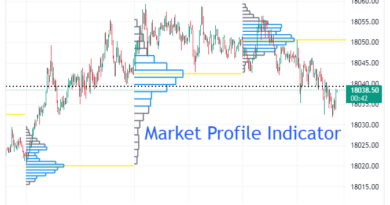Understanding Scalping Trading
Scalping definition :
Scalping trading is like the sprinter of the financial markets – quick, precise, and highly demanding. In essence, it’s a trading strategy where traders aim to make small profits from numerous trades throughout the day. Unlike long-term investing or swing trading, which may hold positions for days, weeks, or even months, scalping involves holding positions for mere minutes or seconds. At its core, scalping hinges on exploiting small price differentials in highly liquid markets.
Traders capitalize on the bid-ask spread – the difference between the highest price a buyer is willing to pay and the lowest price a seller is willing to accept. By rapidly entering and exiting trades, scalpers aim to capture these tiny price movements, accumulating profits over a high volume of trades.
Importance and Popularity in Financial Markets
Scalping trading, despite its intense nature, holds significant importance and popularity in financial markets for several reasons.
- Liquidity Provider: Scalpers contribute to market liquidity by executing a high volume of trades, which helps ensure that buyers and sellers can enter and exit positions quickly at competitive prices. This liquidity benefits all market participants, from individual traders to large institutional investors, by reducing transaction costs and minimizing price slippage.
- Price Efficiency: By exploiting small price differentials, scalpers help to enhance price discovery and efficiency in financial markets. Their rapid execution of trades helps prices adjust quickly to new information, ensuring that assets are traded at fair market values.
- Market Accessibility: Scalping trading is accessible to a wide range of traders, from retail investors to institutional traders. Unlike some trading strategies that require substantial capital or specialized knowledge, scalping can be executed with relatively low capital and basic technical analysis skills, making it accessible to newcomers in the trading world.
- Risk Management: While scalping involves frequent trades and short holding periods, it also emphasizes strict risk management principles. Scalpers typically employ tight stop-loss orders and position sizing techniques to control risk and preserve capital. This disciplined approach to risk management can serve as a valuable lesson for traders employing other strategies.
- Adaptability: Scalping trading can be applied across various asset classes, including stocks, forex, commodities, and cryptocurrencies. This versatility allows traders to adapt their strategies to different market conditions and take advantage of opportunities in multiple markets simultaneously.
- Technology Integration: The rise of electronic trading platforms and advanced technology has further propelled the popularity of scalping trading. High-frequency trading (HFT) algorithms and automated trading systems enable scalpers to execute trades with lightning speed and precision, enhancing their competitive edge in the market.
- Profit Potential: While individual profits per trade in scalping may be small, the cumulative profits generated from executing a high volume of trades can be significant. With proper risk management and strategy implementation, scalpers can achieve consistent profitability over time, making it an attractive trading approach for those seeking short-term gains.
Overall, scalping trading plays a vital role in financial markets, providing liquidity, enhancing price efficiency, and offering opportunities for traders of all levels to participate in active trading. Its importance and popularity are likely to continue as technology advances and market participants seek efficient ways to capitalize on short-term market movements. However, traders should always approach scalping with caution, understanding the risks involved and implementing sound risk management practices to safeguard their capital.
Fundamentals of Scalping Trading
Scalping trading, akin to the rapid-fire shooting of arrows in archery, requires precision, speed, and a deep understanding of its fundamental principles. Let’s delve into the core fundamentals that underpin this fast-paced trading strategy:
- Swift Decision-Making: Scalping is all about lightning-fast decision-making. Traders must analyze market conditions, identify opportunities, and execute trades in a matter of seconds. This demands sharp instincts, quick reflexes, and the ability to stay cool under pressure.
- High Volume, Low Profit Margins: Unlike traditional trading strategies that aim for substantial gains over time, scalping focuses on making small profits from numerous trades throughout the day. These profits may seem modest on an individual basis, but they can quickly add up over a high volume of trades.
- Bid-Ask Spread Awareness: Scalpers thrive on exploiting the bid-ask spread – the difference between the highest price a buyer is willing to pay and the lowest price a seller is willing to accept. They aim to capitalize on small price differentials, buying at the bid price and selling at the ask price, or vice versa, within a fraction of a second.
- Intraday Trading: Scalping typically involves holding positions for very short periods, often just a few seconds or minutes. Traders aim to capitalize on short-term price movements, entering and exiting positions swiftly to lock in profits before the market conditions change.
- Technical Analysis Mastery: Technical analysis is the bread and butter of scalping trading. Traders use charts, indicators, and patterns to identify short-term trends and price movements. They rely on tools like moving averages, Bollinger Bands, and stochastic oscillators to make rapid-fire trading decisions.
- Risk Management: Despite the rapid pace of scalping, risk management remains paramount. Traders must set tight stop-loss orders to limit potential losses on each trade. Position sizing is also crucial, ensuring that no single trade exposes them to excessive risk. Preservation of capital is key to long-term success in scalping trading.
- Discipline and Focus: Successful scalpers exhibit unwavering discipline and focus. They stick to their trading plans religiously, avoiding impulsive decisions driven by emotions or market noise. Patience, consistency, and the ability to stay composed amidst market volatility are traits shared by top scalping traders.
- Adaptability to Market Conditions: Scalpers must be adaptable and able to pivot their strategies based on changing market conditions. They monitor market volatility, liquidity, and news events closely, adjusting their approach to capitalize on emerging opportunities and mitigate risks.
In essence, the fundamentals of scalping trading revolve around speed, precision, and discipline. Traders must master the art of making quick decisions, managing risks effectively, and staying focused amidst the frenetic pace of the market. While challenging, successful scalping trading can yield consistent profits for those who are adept at navigating its intricacies.
Advantages and Disadvantages of Scalping Trading:
Scalping trading, like any trading strategy, comes with its own set of advantages and disadvantages. Let’s explore both sides of the coin:
Advantages:
- Quick Profits: Scalping allows traders to make multiple trades in a short period, aiming for small but frequent profits. This can result in significant cumulative gains over time.
- Reduced Exposure to Market Risk: Since scalping involves holding positions for very short durations, traders are exposed to less market risk compared to longer-term strategies. This can help mitigate the impact of adverse market movements.
- Liquidity Provision: Scalpers contribute to market liquidity by increasing trading volume and activity. This can lead to tighter bid-ask spreads and improved price efficiency, benefiting all market participants.
- Adaptability to Market Conditions: Scalping strategies can be applied to various market conditions, including both trending and ranging markets. Traders can adjust their tactics to capitalize on short-term price movements regardless of market direction.
- Enhanced Discipline and Focus: Scalping requires traders to maintain strict discipline and focus, as they must adhere to predefined trading plans and execute trades swiftly. This can help improve overall trading discipline and decision-making skills.
Disadvantages:
- High Transaction Costs: Due to the high frequency of trades, scalpers incur significant transaction costs, including commissions, spreads, and fees. These costs can eat into profits, especially if not managed effectively.
- Stress and Emotional Strain: The fast-paced nature of scalping trading can be mentally and emotionally demanding. Constantly monitoring the markets, making split-second decisions, and dealing with rapid price fluctuations can lead to stress and burnout.
- Technology Dependency: Scalping often relies on advanced trading technology and fast internet connections to execute trades quickly. Technical issues or internet outages can disrupt trading activities and potentially lead to missed opportunities or losses.
- Limited Profit Potential Per Trade: While scalping aims for frequent profits, the gains per trade are typically small. This means that traders need to execute a large number of trades to achieve significant overall profits, which can be time-consuming and mentally taxing.
- Increased Risk of Overtrading: The temptation to overtrade is high in scalping, as traders may feel pressured to constantly be in the market to capture short-term opportunities. This can lead to impulsive decision-making and increased exposure to losses.
- Market Noise and False Signals: In volatile markets, price movements can be erratic and unpredictable, leading to false signals and whipsaws. Scalpers must be adept at filtering out noise and identifying genuine trading opportunities to avoid losses.
In summary, while scalping trading offers the potential for quick profits and increased liquidity provision, it also comes with inherent challenges such as high transaction costs, stress, and technology dependencies. Traders considering scalping should carefully weigh these pros and cons and develop robust risk management strategies to navigate the complexities of this fast-paced trading approach.
Case Studies and Examples of scalping trading
Case Study 1: Forex Scalping
A notable example of forex scalping involved a trader focusing on the EUR/USD and GBP/USD currency pairs during the European and North American market overlaps. By applying high leverage and using technical indicators like the stochastic oscillator and EMA (Exponential Moving Average), the trader managed to execute around 50 trades a day. With an average profit of 5 pips per trade and a 70% success rate, the trader achieved a substantial total profit, demonstrating the effectiveness of a well-planned scalping strategy in the forex market.
Case Study 2: Stock Market Scalping
In the stock market, a scalper targeted highly liquid stocks, utilizing short-term fluctuations within the trading day. Employing tools such as Bollinger Bands and the MACD (Moving Average Convergence Divergence), the trader identified entry and exit points for quick trades. This strategy resulted in an average of 40 trades per day, with an average profit margin of 0.1% per trade. Despite the small profit per trade, the cumulative effect led to a noteworthy overall profit, underscoring the potential of scalping in the stock market.
Case Study 3 : Successful Gold Scalping
Consider a trader who specializes in scalping gold during times of high market volatility, such as during the release of U.S. employment data. By closely monitoring the market and employing a combination of the RSI and Bollinger Bands to signal buy and sell points, the trader executes multiple trades, capitalizing on the rapid price movements. With a disciplined approach to stop-losses and profit-taking, the trader manages to secure a series of small gains that, cumulatively, lead to a significant profit by the end of the trading day.
Challenges and Tips for Aspiring Scalpers

Scalping the market is not without its challenges, including the potential for rapid losses, the impact of transaction costs, and the psychological strain of high-frequency trading. Aspiring scalpers should begin with a demo account to hone their strategy and get accustomed to the fast-paced nature of scalping. Continuous learning, focusing on market analysis, and staying updated on global economic events are crucial for success. Moreover, maintaining discipline in both entry and exit strategies will help in navigating the complexities of the gold market.
In conclusion, while scalping the market can be lucrative, it demands a high level of expertise, fast decision-making, and strict discipline. By understanding the market dynamics, employing effective strategies, and managing risks, traders can explore the potential of scalping to enhance their trading portfolio.








